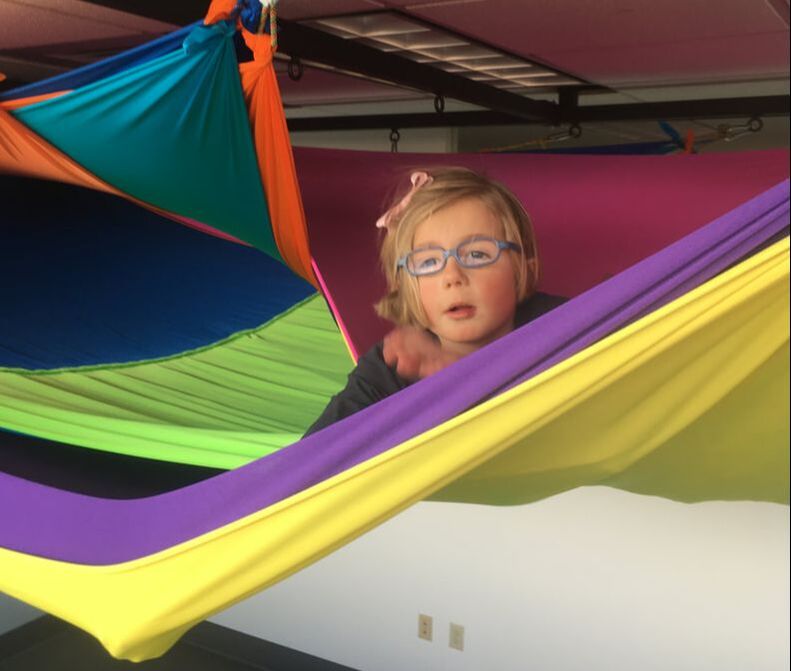|
Intensive Occupational Therapy
Mary will be coming to your home to provide Occupational therapy 3-4 times per week. The therapy will incorporate play and exercise to allow for redeveloping the muscular skeletal system, the sensory receptors, and their neurological connections to allow for a greater brain and body balance. Play may be child directed with the use of therapeutic tools appropriate for that child’s development. Therapeutic tools may include: Swings, scooters, inner tubes, lycra, spinning, ropes, bungee, therapy balls, and climbing apparatuses for developing core and body receptors; headphones for auditory and spatial receptors; puzzles and visual perceptive games for visual receptors; and mouth toys for taste, oral and postural receptors. |

Mary works to develop strong stabilizer muscles:
Each body part plays a key role in triggering the brain for higher learning concepts. A stable.body allows for a child to coordinate functional movement, cognition, and endurance with play, education, and self regulation.
To perform well in school and in the community, kids need to strengthen their postural support to allow for greater maturity with motor skills, self regulation and functional sensory receptors. Postural stability decreases distraction when manipulating a writing instrument, controlling their eye movement to track words on a page, and calming their bodies to allow greater ability to attend and focus on the instructions a teacher or parent is providing.
A Strong Core Quiets our Retained Primitive Reflexes:
Primitive reflexes are effective in allowing a newborn baby to understand their body in a gravitational plane. They are reflexive reactions that allow the babies to survive in their new world and to begin development of motor planning. Motor development is sequential. The sequence of steps with motor development allow for greater development of a child’s functional coordination, functional endurance, emotional regulation, functional vision, auditory processing, and the vestibular system.
Due to safety measures established and the increase screen time, many of the motor development sequences are minimized, causing deficits with core stability, functional vision, auditory processing, and body brain coordination.
When a core is not stable our body retains the primitive reflexes that appropriately resolve within the first year. The retained primitive reflexes may make it difficult to develop successfully due to reflexively getting in the way of motor maturity.
|
A Stable Postural System Allows for greater Maturity with Sensory Processing:
Sensory processing is the body’s ability to accurately register, modulate, regulate, and interpret input received from the environment through receptors in the skin, joints, muscles, inner ears, eyes, nose, and mouth. Our brain interprets the new stimulus and then the body reacts to the stimulus accordingly through motor or behavioural responses. Sensory receptors include: touch, sight, sound, movement, body position, taste, smell... all of our senses. Sense of body movement is received in the tactile, proprioceptive (pressure through our joints and muscles), and vestibular systems. |
|
Programs Offered Therapeutic Listening Astronaut Training Interactive Metronome Vision Therapy Sensory Integration Therapies Neuro Rehabilitation Reflex Integration Handwriting Without Tears |
Referral Services For Physical Therapy Referral source for Psychologists Neuropsychologists Developmental Optometrist Nutritionist Speech~Language Pathologists Post Adoption Service |
|
